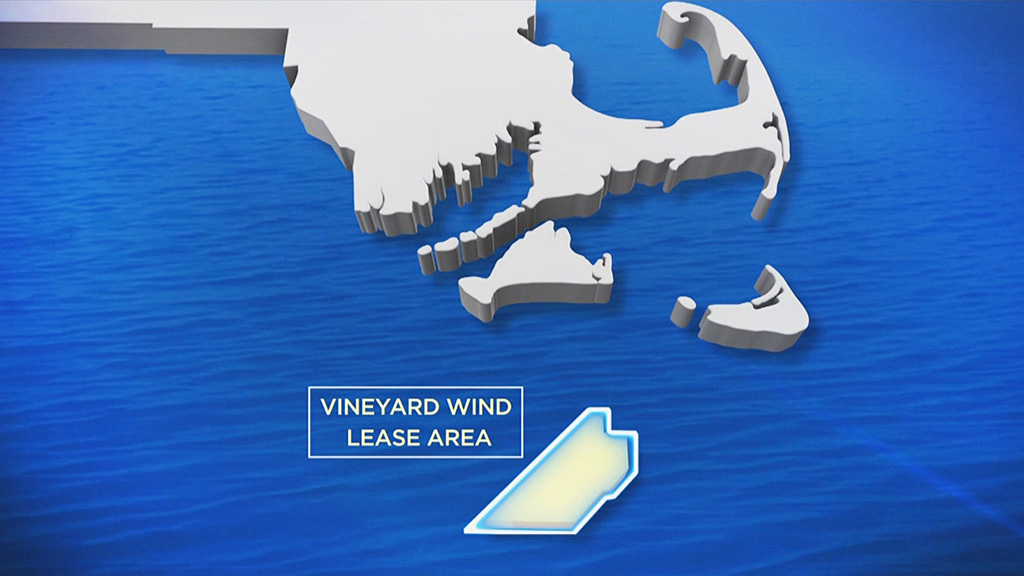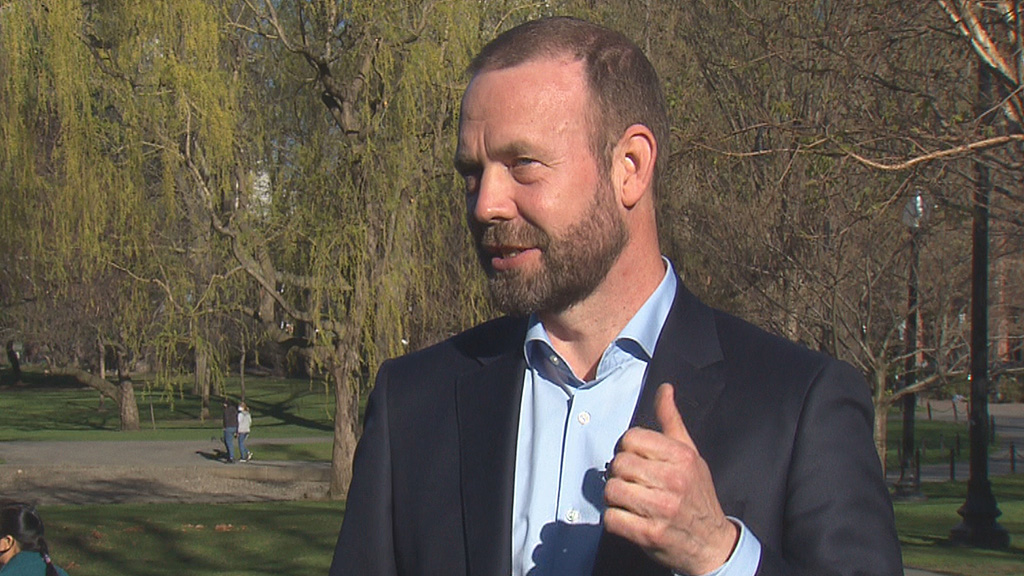First Major U.S. Offshore Wind Farm Set To Be Built Off Martha's Vineyard
BOSTON (CBS) - In the world of wind, there are gentle breezes and full-fledged gales. A project developing south of Martha's Vineyard is the latter. After years upon years of exploring and attempting to tap New England's potent offshore wind, Vineyard Wind is one federal permit away from building the first commercial-scale offshore wind farm in the United States.
Lars Pedersen, CEO of Vineyard Wind, calls our offshore region, "the Saudi Arabia of offshore wind" because of the extremely consistent nature of the wind here. Not just big storms that we're famous for, but everyday wind without many quiet seasons. His company is poised to become the first to harness some of that power.
 Vineyard Wind project (WBZ-TV)
Vineyard Wind project (WBZ-TV)
The project is set to be constructed 15 miles south of Martha's Vineyard, which contrasts with the failed Cape Wind proposal which was sited in Nantucket Sound between Cape Cod, Martha's Vineyard, and Nantucket. A major point of contention with Cape Wind was from homeowners against having turbines in their every day view, and the Nantucket Sound position would have been in sight of many more eyeballs.
While farther offshore, the 62 turbines will be massive. The blades, manufactured by General Electric, are the largest in the world. Each one is longer than a football field, and Pedersen says that just two spins of one blade can power a house for an entire day. The 62 together, working at full capacity, will provide enough energy to power 400,000 homes. Cables laid several feet under the sea floor will travel north to Cape Cod, where they will meet the land at Covell's Beach in Barnstable and enter the New England power grid.
Moving farther out was one piece of the puzzle to get the project green lighted, but another concern came from local fishermen. To create safer shipping lanes, the turbines will be spaced farther apart than any others on earth, a full nautical mile between each one.
Up to this point, wind energy progress has been extremely slow. There are only seven wind turbines located in federal waters across the entire U.S. But when looking for successful sites, there are few more lucrative than the waters just off the Mid-Atlantic and New England. Three reasons make it a target for offshore wind developers. The consistent wind that keeps turbines spinning, the shallow waters that make it easier to build, and the large population nearby to supply electricity to.
Companies like Vineyard Wind hope that this will be the first of many projects over the next several years. Pedersen says it's as much of a jobs initiative as it is about producing renewable energy.
"Revitalizing ports, manufacturing jobs, we see this as the first of many steps in building an industry," he told WBZ-TV.
 Lars Pedersen, CEO of Vineyard Wind (WBZ-TV)
Lars Pedersen, CEO of Vineyard Wind (WBZ-TV)
To that end, Massachusetts Maritime Academy is planning on helping anyone tied to this growing sector. A course taught at the academy can certify anyone doing offshore work, and that certification is recognized internationally.
Captain Michael Burns told WBZ that there's an unmistakable momentum in the offshore wind field, and that it will require a diverse group of people.
"Obviously, folks involved in the construction, scientific personnel studying marine life, as well as offshore wind technicians doing the operation and maintenance once everything's constructed," he said.
Burns mentioned the importance of safety on the open water, and that some will be trying it for the first time.
"These are extremely isolated environments," said Burns, "and they have to be very well trained and know how to rescue each other if they do get in trouble."
All local and state permits have been approved for the project after four years of review, and that final piece, called a "record of decision," is expected in a matter of weeks. If that is received, financing will be shored up and Vineyard Wind hopes to begin construction on land by the end of this year.
The hub for Vineyard Wind will become the Marine Commerce Terminal in New Bedford.
"I was born in Denmark, the land of Legos," said Pedersen. "So the Lego pieces will come in. Lots of people doing construction, cranes, transport, moving it all onto barges so it can be moved to vessels offshore and be installed."
From there, offshore work would begin in 2022, with the first energy produced hitting the New England power grid in 2023. The Biden administration has set a goal of 30 gigawatts of offshore wind energy by 2030, which would require roughly 30 similar projects over the decade.



